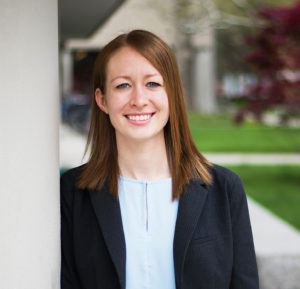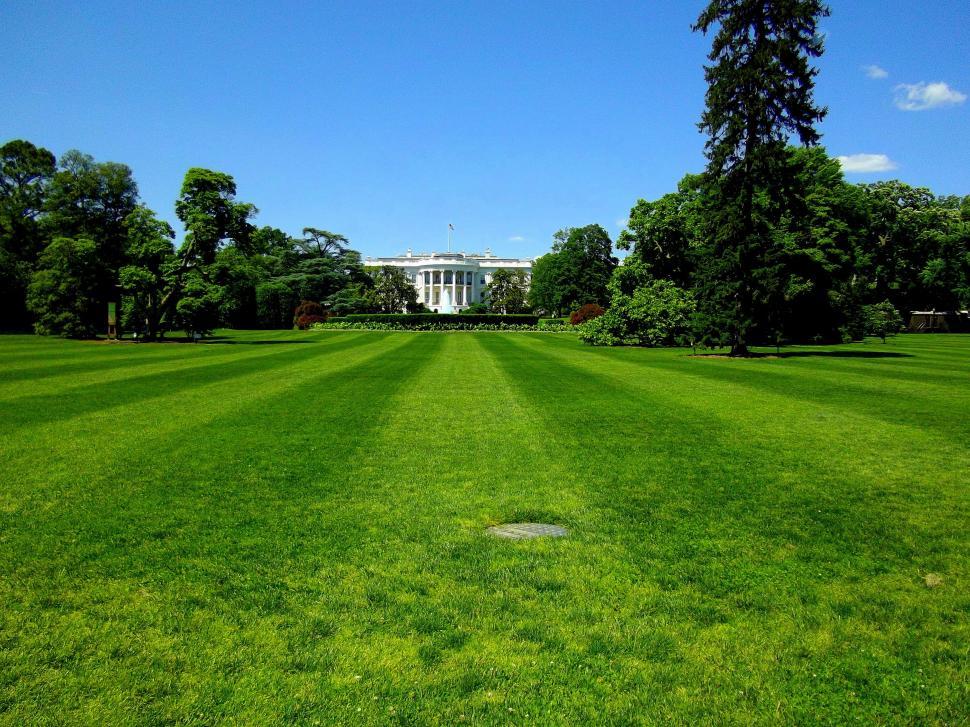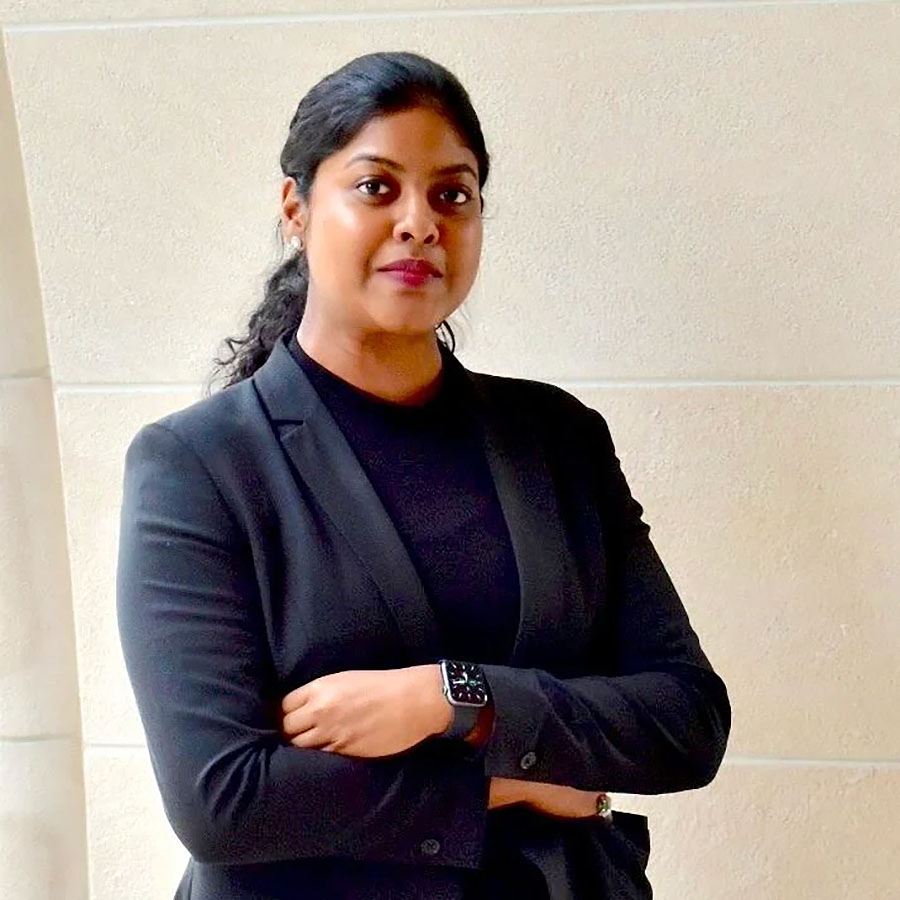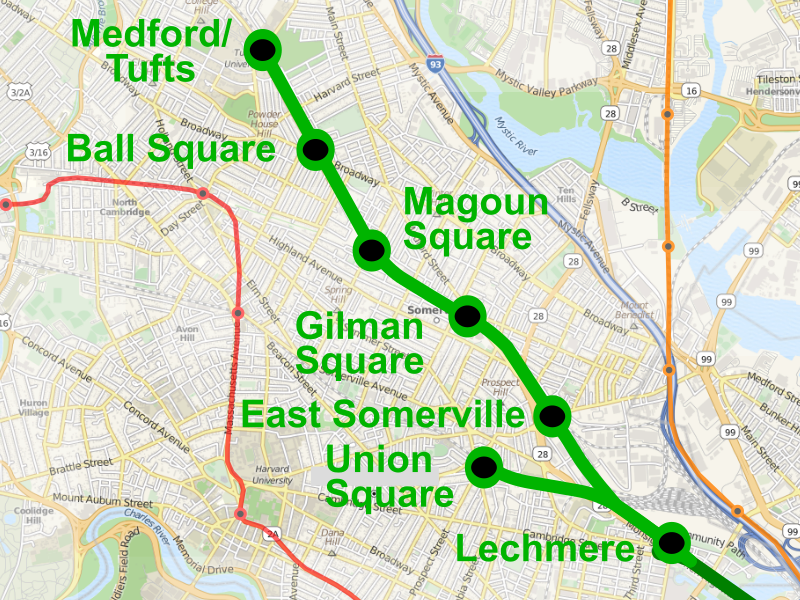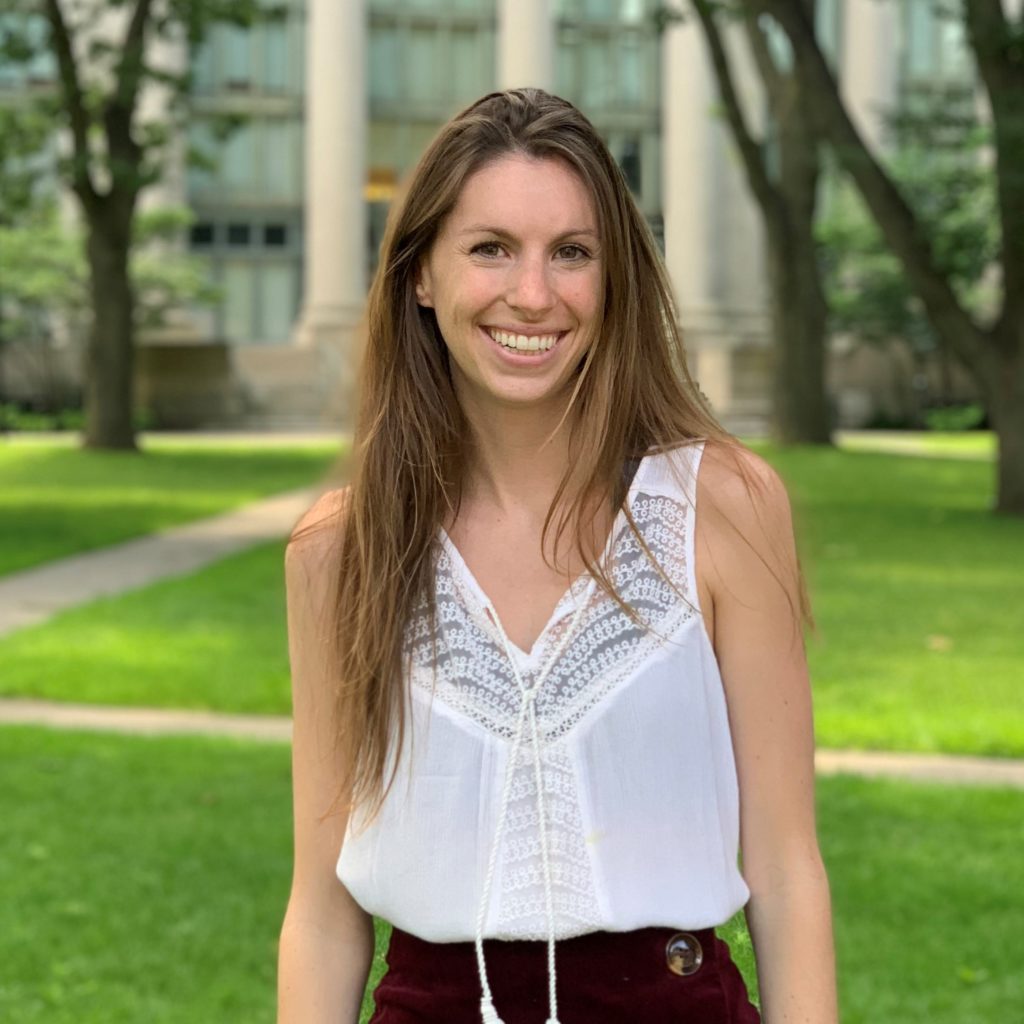A conversation with Lisa Dicker ’17 and Danae Paterson ’16
In their Spring 2020 issue the Harvard Negotiation Law Review published a cutting-edge analysis by Lisa Dicker ’17 and Danae Paterson ’16: “COVID-19 and Conflicts: The Health of Peace Processes During a Pandemic.” Brought to print in June, the article explores the complex, challenging, and sometimes surprising ways in which the pandemic had already impacted international peace processes, drawing insights from the authors’ substantial experience as practitioners in the field. In November 2020, Lisa and Danae engaged in a virtual interview—published below—with HNMCP Assistant Director Sara del Nido Budish to dig more deeply into the article’s findings, provide a behind-the-scenes look into how they translated real-time developments into broader questions and learnings, and share an update on where these peace processes stand eight months into the pandemic. They also offer advice to recent graduates on integrating research and writing into a busy career (spoiler alert: a great co-author helps!).
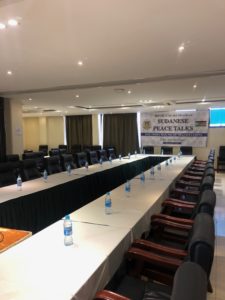 HNMCP: Let’s rewind back to spring 2020. You both were working for a non-governmental organization that works in advising peace negotiations and post-conflict transitions—what inspired you to write “COVID-19 and Conflicts: The Health of Peace Processes During a Pandemic”?
HNMCP: Let’s rewind back to spring 2020. You both were working for a non-governmental organization that works in advising peace negotiations and post-conflict transitions—what inspired you to write “COVID-19 and Conflicts: The Health of Peace Processes During a Pandemic”?
Lisa Dicker (LD): The field of peace negotiations relies on extensive travel of the parties, mediators, and advisors. From 2018 to early 2020, a major component of my work portfolio was advising parties involved in Sudan’s civilian revolution and democratic transition, and advising delegations to the Sudanese Peace Process. So I spent a lot of time going back and forth to locations like Addis Ababa, Ethiopia; Paris, France; and Juba, South Sudan. On March 12, 2020, I woke up at around 6am in Juba, South Sudan, to prepare for another day of peace negotiations for Sudan. When I looked at my phone and saw over a hundred texts, WhatsApps, and calls, my first thought was, “It is so kind of everyone to reach out on my birthday!” But, I quickly realized that instead, the United States had announced the start of flight and entry restrictions due to the COVID-19 pandemic, and borders were rapidly closing around the world. I was in transit back to Washington, D.C. by that afternoon, and the flights and airports were filled with internationals traveling home as countries locked down. Seemingly overnight the landscape of the peace processes changed, and for me this article was born out of being on my flights home thinking, “Well, we are all going to have to innovate.”
Danae Paterson (DP)1: In a broadly similar vein, the first week of March I was in Amman, Jordan, meeting with various stakeholders and mediators in the context of ceasefire and peace agreement negotiations for Yemen and laying out plans for the next several months of work. I didn’t realize on my flight home that it was going to be the last time I would be inside a meeting room of any kind for more than half a year, let alone one on the other side of a transatlantic flight that gathered together advisers and mediators from three or four global regions. However, this also gave me an interesting seat by which to observe the quick pivot of many actors involved in the Yemeni negotiations to preserving as much momentum as possible, and identifying creative (if challenging) options for moving forward despite these barriers. Sitting side-by-side with my work on the Syrian context, whose mediation team responded to the pandemic very differently, it became apparent that there were highly differentiated responses to similar (though far from identical) travel conditions, and this certainly caught my attention and sparked curiosity about where we might find ourselves in these diverse peace processes—which were starting at very different points in their negotiating framework as well, I should be sure to emphasize—as the world continued to stagger forward in its pandemic response.
HNMCP: You mention that it’s become more common for even conflicts internal to a particular country to be mediated by international actors. What aspects of that model make the pandemic a particularly destabilizing or disruptive force for peace processes? On the flip side, one of the things that may not be intuitive is that for some peace processes, the pandemic has had the effect of acceleration. Why is this? Is it possible that within a particular peace process, there could be ways in which some elements are stymied while others are facilitated?
DP: It’s certainly true to our observation and research that a greater number of international actors involved in a peace process tends to lead to a greater need for trans-national travel. Syria is a great example—we have the UN Envoy’s team hosting convenings in Geneva, country-level Envoys or Special Representatives scattered liberally in a number of locations across Europe, the U.S., and the Middle East, and of course the parties themselves (many of whom live in exile abroad). As we discuss at relative length in the article, this “internationalizing” of the process and the travel that comes with it is especially vulnerable to the significant restrictions on travel, public gatherings, and similar that this particular pandemic has triggered. As a result, these processes—many of which are already tenuous in their ability to tempt parties to the table, and challenging to coordinate even under the clearest of circumstances—are vulnerable to destabilization. Not to say that this wouldn’t necessarily be true in some contexts without international mediation—as noted above, in some cases the internal parties themselves may be scattered across multiple nation-states. Nonetheless, it’s sometimes stunning how something as mundane on its surface as visas, hotel rooms, flights, and other essential operational tasks necessary for a peace process to materialize, suddenly becomes a central factor in whether or not essential agreements can be made. Of course, this is true pre-pandemic as well, but the difficulty (or, in April when we were drafting this article, the complete inability) to move these pieces forward was poignant. In other cases, however, the pandemic suddenly creates an opening for mediators to shed those burdens and barriers that, as we discuss in the piece, have sometimes created challenges to convening important discussions under non-pandemic circumstances. We saw this more successfully in the Yemen context in the earlier days of the pandemic than we did in, say, Syria.
HNMCP: You note that for some countries that have historically been conveners of international peace processes, the pandemic has highlighted the, in some ways, zero-sum nature of their resources and bandwidth. For instance, as Italy, France, and Germany have had to handle their own internal crises, that has diverted their attention from facilitating the Libyan peace process. What conclusions can we draw from this, if any, about what makes an effective convener and facilitator?
LD: I think that it further reveals that third-party countries convene, mediate, and facilitate peace processes because doing so meets their present interests—whether it is for regional stability, economic interests, halting the flow of refugees, etc. But, interests are tenuous and can change. In 2020 with the COVID–19 pandemic, we saw a quick and abrupt shift in the prioritization of interests for many third-party countries at the same time because of the global nature of the pandemic, but interests also change with domestic elections, domestic crises, and so forth. Because of this, international peace processes may always be tenuous. The more vested the interests of the third-party countries are, the more committed their engagement as a convener and facilitator may be, but that also means that they are more likely to have a strong agenda of their own in the negotiations that could negatively impact the process as well. So, it may be a bit of a balance: you want an third-party convener that has interests strong enough that they are likely to prioritize their continued engagement in the peace process, but perhaps not so strong that they essentially are an additional party to the negotiations.
HNMCP: One of the dynamics you highlight is that for some countries—whether or not they already showed signs of authoritarian government—the pandemic has provided an opportunity for the government to consolidate power. It seems like in some cases, this essentially improves the government’s BATNA; it’s less urgent to genuinely engage in a peace process if a military solution seems viable. Against this backdrop, what strategies do international conveners have to persuade these countries to come to the table in good faith?
DP: This is in many ways the million-dollar question! I think it’s fair to say that this depends heavily on the specific context. In certain contexts there may be third-party countries who have boots on the ground, so to speak, and may even rise to the level of themselves constituting a belligerent in the armed conflict, even if operating (nominally, at least) on behalf of a domestic party to the conflict. In other cases you may have these states engaging less directly—providing varying levels of support (financial, military, technical, or otherwise) to certain parties to the conflict. In any of these instances, these third-party states may be able to exert considerable influence over the domestic parties they support, and may therefore constitute one route by which to persuade the negotiators of that party to return to the table. In situations where the third-party state is both willing and able to do this (neither of which are a guarantee, to say the least), international conveners may have the option of conducting outreach to (or leveraging/pressuring) these third-party states to assist in bringing the parties back into the process. This presumes, of course, that the specific interests of that third-party state vis-à-vis the armed conflict also align with a reconvening of the process, which is far from a given.
HNMCP: Some of the impacts of the pandemic that most immediately come to mind, for many of us, are probably process-related: an inability to travel, to gather in large groups, to engage in spontaneous rapport- and relationship-building so important to any negotiation. In what ways are these types of changes impacting the substance of peace processes, as well? How is the pandemic highlighting the connection between process and substance in the context of international peace processes?
DP: While I can’t get too far into the weeds on many of the substantive details under negotiation, I will note that in some cases the process points simply become barriers to opening the door to substantive progress. This is a bit of a blunt-axe response to a nuanced question, but as we saw in the Syrian context, the mobility barriers that prevented in-person convening effectively halted the work of the Constitution-Drafting Committee and its constitutional negotiations, at least as it pertains to the formal convenings between the parties and direct negotiations amongst them in that forum. That has since changed (with parties and mediators alike traveling in recent months), but was an interesting factor at play in the earlier days of the pandemic. This facilitated certain Regime-held interests (namely, stalling), and further delayed substantive negotiations on key constitutional issues until in-person gatherings were permitted by global travel conditions. Given the (pre-pandemic) nexus between global mobility and these processes, the interlinking between process and substance is relatively tightly wound. Which is another reason that it will be very interesting to see whether post-pandemic, we find ourselves in an altered world of negotiating peace, with less travel and greater reliance on virtual convening platforms.
LD: In other contexts, negotiators and mediators may have been a bit surprised by how much substantive progress could be made during remote negotiations, particularly if the parties were truly committed to the peace process (e.g. were not seeking a stalling tactic). In Sudan, steady—though potentially slowed—progress was made throughout remote negotiations and until in-person talks could be held again. It is possible that remote negotiations may have impacted the sequencing of issues in some peace processes, such as reserving certain extremely sensitive issues to be negotiated in person while focusing on less sensitive ones in remote negotiations. Additionally, in many contexts, the pandemic also put a brighter spotlight on pre-existing humanitarian issues, like access to medical supplies and facilities.
HNMCP: You note that for many peace processes, the use of video conferencing has been a novel and, in some cases, welcome development. Has the use of technology opened up any other new possibilities or process innovations that didn’t exist (or were harder to identify) before?
LD: In general, it seems 2020 has turned many of the norms of the logistics of peace processes on their head. Whereas processes have largely relied on formal negotiations being isolated to large, in person convenings, the incorporation of technology to allow negotiations to continue while parties and third-party conveners, mediators, and facilitators are physically distant has opened a whole new realm of possibilities for process structure. This could make the timeline of processes far less restrictive, which could promote efficiency—negotiations don’t have to stop just when the delegations are in the locations of residence which could prevent the typical ebbs and flows of negotiations as parties are convened, return home, convened again, and so forth. As we discuss in the article, there are certainly immense and irreplaceable benefits to convening in person, but 2020 may have helped process designers and parties realize that negotiations do not have to be solely restricted to in person. On a technology note, in addition to video conferences, remote document exchange and joint document editing seem to have become more prominent as well. For security reasons, peace processes are typically a paper-heavy endeavor, but the pandemic has pushed the use of secure document-sharing platforms. Developing fluidity, knowledge, and comfort in remote document exchange and drafting also opens the door for more continuous negotiations.
It is important to remember, however, that while some secure platforms may be as secure—or arguably more—secure than paper (e.g. think multiple layers of passwords and encryption; inability to print, copy, or edit), not all tech is created equal. So while there are many technological innovations to address a more decentralized globe in general and certainly a more immobilized one during COVID-19, that doesn’t mean every shiny new platform is ethically available for these processes, in particular due to vulnerability to hacking, insufficient encryption, and so forth. I am certainly not a tech expert, but I would definitely want one (or a dozen) on my team if I were considering platforms for any remote communications.
HNMCP: You make a persuasive case that a Zoom meeting of over 150 people does not necessarily capture the benefits of an equivalent in-person meeting. While a large-group convening of stakeholders is clearly a critical part of the peace processes you highlight, it also seems like there are multiple steps in those processes involving group interactions large and small. Do you see the virtual environment having a decentralizing effect on peace processes? What would be the challenges and benefits that grow from that kind of shift?
DP: While it is probably (still) too early to tell, the experience of certain peace processes shifting to a virtual forum certainly could trigger at least some degree of decentralization of the process. I could foresee a number of tradeoffs to this. On the one hand, large groups can be unwieldy for many reasons (true of in-person negotiations as well!). Smaller group interactions may allow for individual participants to hold the (metaphorical or literal) mic for longer, discuss issues in greater depth and potentially also at a higher volume, and to facilitate potentially closer personal connections and exposure between negotiators participating in the forum. These can all be useful outcomes.
However, there are also potential costs. The question of whose interests get represented in any particular peace process, and who those interests are represented by, is an exceptionally important—and difficult—component of an effective process. The greater the number of voices, interests, and parties represented in a process, the more likely it is that a broader range of diverse stakeholders and interests are meaningfully represented in the process. However, the greater the number of voices, the more difficult it may be to achieve the level of consensus between these groups that is necessary to produce an agreement. But, absent the inclusion of key stakeholders in the negotiating process, an agreement that is ultimately produced may be unresponsive to certain swathes of the population, fail to generate popular support, and face barriers to implementation on the ground as a result. This can deteriorate the durability of the peace that an agreement theoretically seeks to achieve. And of course, if the underlying needs of various groups of stakeholders are neglected in the arrangement that is ultimately developed through the process, core goals in a peace process such as resolving underlying conflict causes are less likely to be advanced. As a result, inclusivity in representation can be an important contribution to the central goals of many processes—resolving the underlying causes of conflict, creating the foundation for a stable post-conflict state, opening the door to the beginning of transformational and healing processes that may begin post-agreement, and so on.
That said, large forums are far from the only way to enhance inclusivity (there are many options, including strategic membership on smaller convenings such as working groups and committees, stakeholder outreach and participation mechanisms, and much more), and by no means sufficient in and of themselves to ensure the meaningful representation of diverse groups.
Of course, I’ve also left unaddressed here critical additional questions that are caught up in this—how “stakeholders” to a particular context are identified to begin with (and by whom); which stakeholders are in fact considered parties to a peace process, and again by whom; who selects representatives for a particular group, and how; whether there are options are available to stakeholders if they feel their representatives are not properly representing their interests; how decision-making by representatives is structured and the protections to ensure no one group can be overpowered by others; and the list goes on. But hopefully this gives you a taste!
HNMCP: The article was published at the beginning of June, having been written largely in April and May. Where are these peace processes now? What additional insights or learnings have come from the past six months?
LD: Libya, in particular, has had very interesting developments in recent weeks. In June, where our article left off, the peace process was largely stalled, including with the highly involved third-party countries focusing on their internal crises with COVID-19. In late August, civilian protests erupted in major cities across Libya, in both GNA and LNA controlled areas, protesting issues including lack of public services, lack of security, corruption, and an inability of the governing authorities to respond to COVID-19. The protests likely assisted in pushing the GNA and LNA’s engagement in the newly revived UN-led process. On October 24, 2020, the GNA and LNA agreed to a permanent ceasefire, and the political negotiations have evolved into a process called Libyan Political Dialogue Forum, which held its first session on October 26, 2020. I’ll avoid lapsing into a robust real-time commentary here, and it is probably too soon to tell, but it is possible that when researchers look back on Libya years from now, COVID-19 may have initially stalled the peace process, but then contributed to pressuring the parties to come to the table and genuinely seek agreement. Conversely, the cadence of the peace process for Sudan has continued to move along at a fairly consistent clip throughout the pandemic. After transitioning into remote negotiations during the height of COVID-19 regionally, as discussed in our article, the parties continued remote negotiations and then began having in person negotiations again when feasible. On October 3, 2020, the transitional government of Sudan and the Sudan Revolutionary Front (SRF) signed a comprehensive peace agreement. The Sudanese peace process does still have two outstanding tracks of negotiations between the transitional government and other opposition groups, so the process is not finished but has definitely achieved a massive success.
DP: One interesting development is that as other parts of the globe have (at least temporarily) opened up to a degree, mobility barriers have eased or at least changed, with resulting movement to the peace process. The UN Special Envoy for Syria, for instance, did convene the Constitutional Committee in-person in August 2020 in Geneva, mirroring old convening habits (if paired with the challenges of mitigating risk of infection and similar). UN Special Envoy Geir Pedersen noted that progress was made, although the Constitutional Committee has yet to convene again since. As the months turn colder and the COVID situation in convening states like Switzerland could potentially take a turn for the worse, it will be interesting to track the prospects for another meeting—and whether there will be any movement on the convening virtual talks. In Yemen, meanwhile, in September the parties met in Switzerland, and succeeded in signing an agreement for a prisoner exchange (an important topic in the Yemeni process) that covers more than 1,000 prisoners—potentially the largest prisoner swap in the history of the conflict, according to UN Special Envoy Martin Griffiths. There is so much we could unpack from each of these developments, but I think one overarching point that both Yemen and Syria illustrate is that although the barriers to each process changed, both of these processes do continue to march on (if at different paces), and likely more so than might have been predicted at the beginning of the pandemic, before the vast array of unknowns of this global crisis became more familiar and navigable. As with so many aspects of this strange new pandemic world, even in remarkably choppy and unpredictable seas, persistent actors have found ways to nudge the ball forward, even if fractionally so. Although difficult to say without longer-term study, this may be more so because global practice around possible travel during the pandemic has evolved as conditions, knowledge, and tools for managing the pandemic have changed, as opposed to breakthroughs in virtual/remote negotiation. And, there is plenty of as-yet unnavigated sea before us. Until a reliable vaccine has been developed and globally distributed in an effective manner, we are likely to continue to see COVID-19 rear its head at least to some degree in relation to travel and in-person gatherings generally, and to the peace processes that rely to varying degrees on both of these frameworks specifically.
HNMCP: Let’s focus on your experience writing this article. One of the reasons it’s so exciting to read is that you are, in some ways, documenting and commenting on a dynamic that is actively unfolding in real-time. What were the challenges of trying to write this account? What are the benefits, from your perspective, of this sort of real-time commentary as opposed to trying to look back with an empirical approach?
LD: It is really quite rare to have an adrenaline rush while writing an academic article! We certainly faced a number of challenges in drafting, including keeping up with ever-evolving events and editing our narrative and analysis to account for breaking news. We were changing and updating sections until the article went online (thank you again to the Harvard Negotiation Law Review editors for being really flexible in this process!) Additionally, both of us were actively working on many of the contexts we examined so often we knew events as they were unfolding but before they had broken in the news (e.g. negotiations have been moved to virtual platforms) and thus needed to wait until a public source was available to include that in the article and then cite to the source. This also meant that the article does cite to an inordinately large number of media sources rather than academic pieces because of course these events are going to hit mediums like Reuters and BBC long before they are thoughtfully compiled and analyzed by academics, think tanks, and so forth. While this is a bit unconventional for a journal article, we also felt confident in using news media sources because we were essentially using them to cite knowledge we already had and knew to be accurate. I certainly think both real-time commentary and a retrospective empirical approach are valuable—with this article we were hoping to both capture a moment-in-time but also to offer an initial analysis that may be useful to both practitioners and academics who are actively working in or grappling with these developments. A real-time commentary is not a complete analysis, but it can be valuable to people now and also to serve as a foundation for future work. If the first two and a half months of COVID-19’s impact on peace processes was more than enough for a full law review article, imagine what the data and analysis could look like after a year!
HNMCP: At a practical level, I’m guessing that some insights and information about particular peace processes grew organically from your work in the field. What are the challenges, from your experience, of trying to write an academic article based on practice?
LD: At the top of our minds was honoring the integrity and confidentiality of clients and the processes we were, at the time, working on. This can be hard because what may seem like readily apparent information to a practitioner because you are in it day in and day out, may not actually be public information. As I mentioned earlier, this in part meant that for any factual statement about the peace processes, we ensured that we included a public source. Another challenge we encountered was how much background is needed for readers on any one of the conflicts and peace processes. Again, being in the weeds of it, we fluctuated between providing limited background and assuming knowledge of the reader and then overcorrecting and having multiple pages of background because every detail of the conflicts and peace processes seemed relevant to us. It was difficult to pull ourselves out of that fluctuation and instead really think “If I were coming in cold, what exactly would I need to have to understand this specific article?” A third challenge was being sure that we focused more on what was happening rather than what we thought should be. As practitioners we are often used to advising and offering options and solutions to the specific stakeholders we are working with, but for the article we had to break out of that habit and be sure we more so engaged broadly with how the peace processes were impacted by COVID-19 and what those impacts may mean, rather than what a specific actor ought to do.
HNMCP: What is your advice to recent graduates who are looking to build in time to write alongside busy careers?
DP: I would say, most importantly, find an excellent co-author! Having had a diverse range of experiences, I can’t overstate what a difference it makes to work with someone who has effective collaboration skills, a keen intellect and well-developed expertise on the topic to hand, the motivation to produce something really interesting and authentic, and who is a thoughtful and effective communicator, all of which really helps make the process clearer, easier, and—at the end of the day—a whole lot more fun! Lisa has all of those attributes and more, and having such a skilled and thoughtful co-author made it not only very possible to draft this alongside a very full schedule, but also made the process itself one of the most rewarding and enjoyable intellectual experiences I’ve had in recent memory!
LD: Danae got to the co-author piece first, but truly drafting with someone who is an incredible thought partner, a true collaborator, and a stellar communicator is crucial. Moreover, you want to be writing on a topic that is interesting and exciting to you, and, if you have a co-author, find one that is as interested and excited in the piece as you are. When you are writing on top of your busy job, you don’t want writing to feel like another job, and when you have a co-author and a topic that have these attributes, it makes the process not only manageable but also enjoyable. It is likely no surprise that Danae is all of those things, and to be quite clear we approached the article with intellectual rigor, but we also had fun while doing so—while on Zoom one morning editing sections and carefully critiquing each other’s work, we also were both eating waffles. You will make time for things you enjoy doing, and writing can be one of them!
1 All views expressed by Danae Paterson are her own in her personal capacity, and not necessarily those of the U.S. Government.
Lisa Dicker ’17 is a Clinical Instructor at the Harvard Negotiation & Mediation Clinical Program and a Lecturer on Law at Harvard Law School. Prior to joining HNMCP, Lisa was Counsel at a global pro bono law firm where she advised on peace negotiations, conflict prevention, transitional justice, and post-conflict democratic transitions. She holds a JD from Harvard Law School where she was Editor-in-Chief of the Harvard Negotiation Law Review. Read more about Lisa here.


